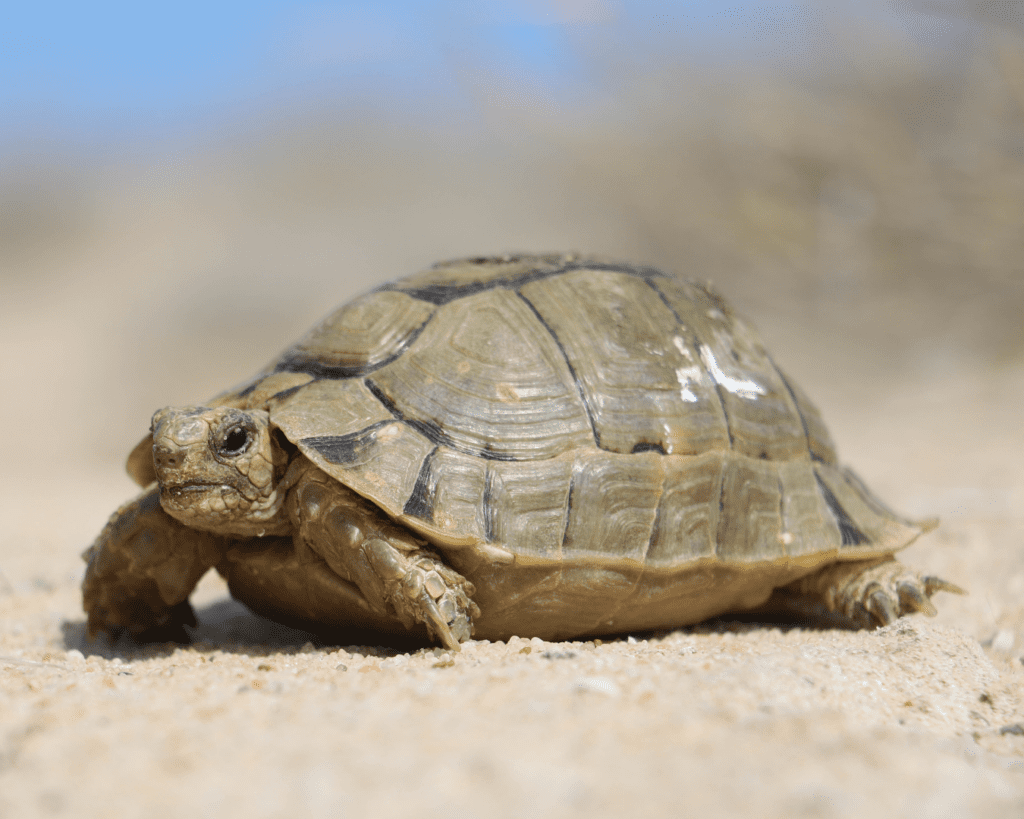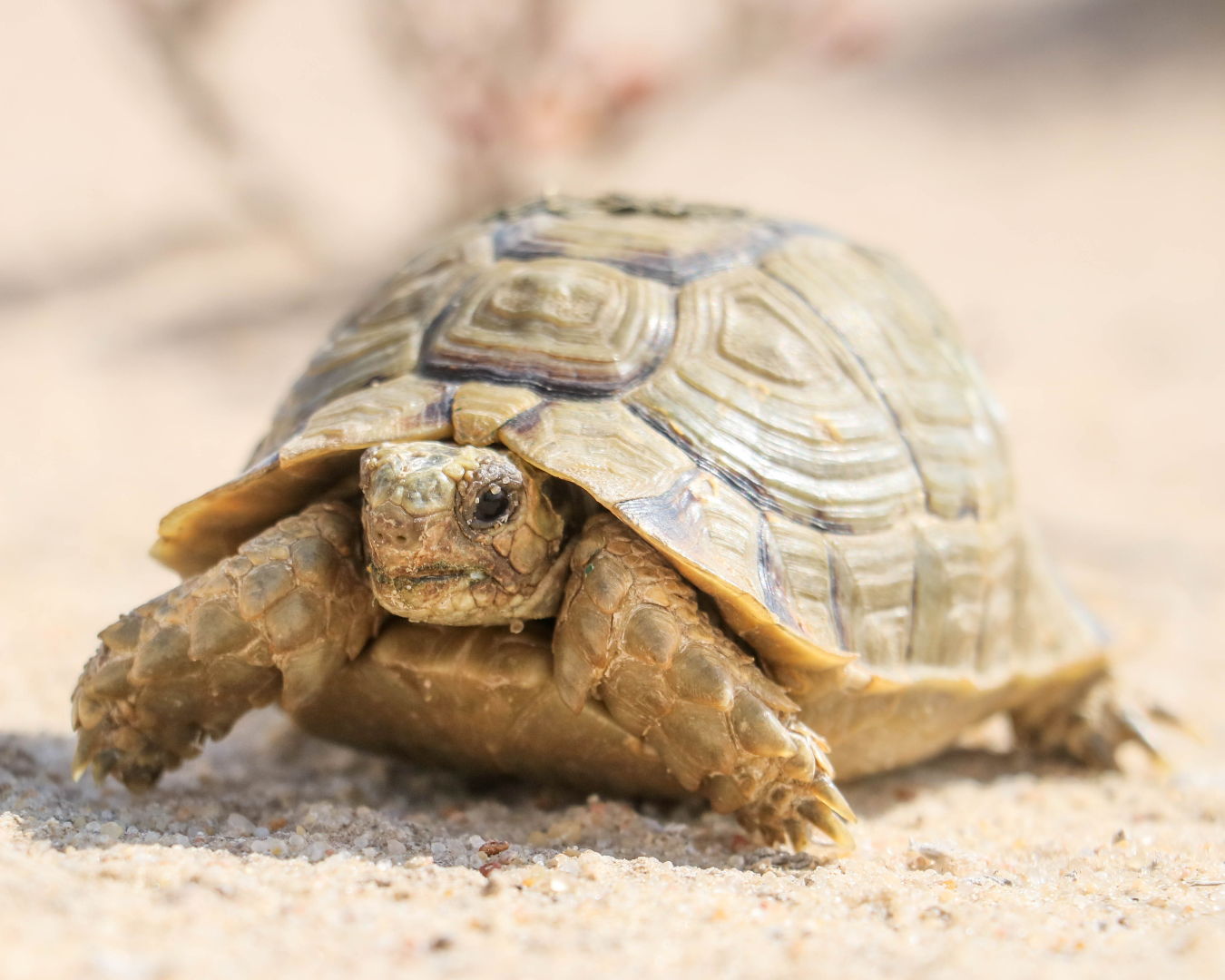Meet one of the smallest tortoises in the wild – the Egyptian Tortoise!
It is the smallest tortoise in the Mediterranean basin and the smallest member of its genus. Males average about 4 inches in length and females average slightly larger at 4.5 to 5 inches. Thanks to its small size, it can find refuge in the shade of sagebrush and rodent burrows, especially during the dry season. Their coastal range hugs the Mediterranean Sea and spreads over 60 miles inland.

In large part due to its petite size, the Egyptian Tortoise’s numbers have been decimated by collection for the pet trade. Other factors such as habitat destruction, overgrazing by livestock, and changes to its natural environment are leading to its continuous decline as well.
We support Basem Rabia, manager of the Zaranik Protected Area in North Sinai, Egypt, and his study, through the laboratory of Dr. Denise Thompson and Dr. Day Ligon of Missouri State University. Basem is studying the population dynamics and population viability of the Egyptian Tortoise in the Sinai Peninsula in order to better protect the populations through a community-conservation-driven approach.
- Pictured: Egyptian Tortoise (Testudo kleinmanni)
- Countries of Origin: Egypt, Israel, Libya
- Habitat: Southern Mediterranean coastal desert and semi-arid sagebrush-dominated shrubland
- Wild Population: Declining; found in small disjunct populations that represent an estimated 15% or less of their historical numbers
- IUCN Red List Status: Critically Endangered
- Threats: Habitat destruction, alteration, and conversion, predominately for agriculture; intensive collection for the pet trade; overgrazing by livestock; climate change
All photos by Basem Rabia.
